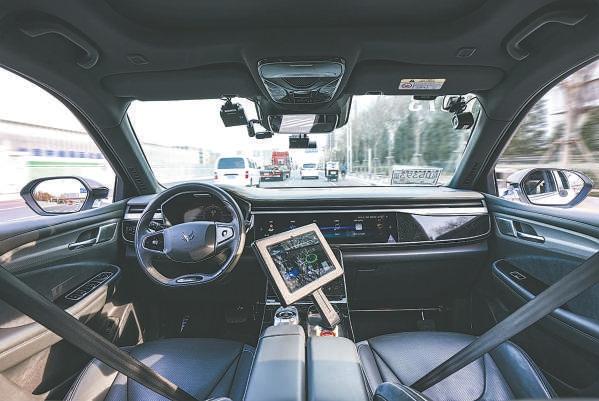World's Largest Autonomous Vehicle Fleet Drives from Beijing E-Town to 13 Countries

[Photo via takefoto.cn]
In Chiba Prefecture of Japan, an unmanned delivery vehicle stopped in front of a remote courtyard. The vehicle's screen displayed a message: "Your package has been delivered. Please open the box to collect your items."
This vehicle is the same model as the unmanned delivery vehicles seen on the streets of Beijing. Developed by a Beijing technology company, the Neolix unmanned delivery vehicle is now "driving" beyond the country's borders and has landed in 13 countries, making it the world's largest autonomous vehicle fleet.
From Shougang Park to Chaoyang Park, and further to the Yizhuang Industrial Park and subway stations, the Neolix unmanned vehicle has been operating in Beijing for the past five years. It delivers packages, takeaway orders, and can even bring ice cream on scorching summer days.
In July 2018, Neolix unveiled the world's first mass-produced Level 4 autonomous vehicle, equipped with a controllable automotive grade chassis, a self-developed triple autonomous driving safety system, and an intelligent networking AI platform.
Over the following four years, Neolix's unmanned vehicles underwent technological upgrades and cost reductions.
"The cost of the first-generation vehicle was over CNY 300,000 (USD 43,074), but the current vehicles in operation are priced just above 100,000 yuan. The latest generation, to be released this year, will be priced below CNY 100,000," said Liu Mingmin, vice president of Marketing at Neolix.
In 2020, Neolix's unmanned vehicles obtained exemption from certification from a renowned German testing institution, allowing them to operate in Duisburg, Germany.
Then, the world's first L4 autonomous driving system international safety certification by Germany's TUV Rheinland in 2022 not only opened the doors for Neolix to get to Germany, but also paved the way for unmanned vehicles to be recognized in Italy, Australia, Singapore, and other countries that adhere to this certification standard.
Meanwhile, Neolix also received the first batch of test codes for unmanned delivery vehicles in Beijing's high-level autonomous driving demonstration zone, enabling them to operate in real traffic environments. This was the first time domestic rights were granted for unmanned delivery vehicles.
Currently, on public roads in Japan, Neolix has been conducting continuous tests with multiple unmanned vehicles for over two years, with high hopes for the market potential there.
By 2025, hundreds to thousands of unmanned vehicles will be used in Japan. "In the next five years, overseas markets will generate more revenue than the domestic market," said Liu.
The company is focusing on expanding into markets in countries like Japan, Singapore, Thailand and Saudi Arabia intensifying efforts to develop and nurture local partners and achieve large-scale promotion and application.
As of now, Neolix's unmanned vehicles have successfully landed in 13 countries worldwide, including Germany, Switzerland, and Singapore.
In addition to these vehicles' applications in cities like Beijing, Shanghai, and Guangzhou, they have a total of over 1,000 vehicles on the road, with a safe driving distance exceeding 6.2 million kilometers. They have provided over 2 million deliveries to more than 300,000 users.
The world's largest autonomous vehicle fleet is currently departing from Beijing and heading towards more countries.

